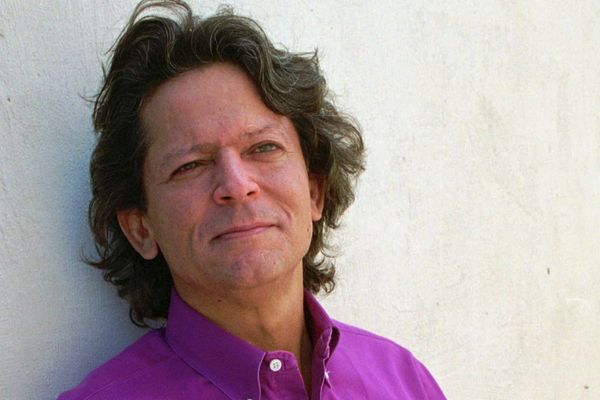
This is the third instalment in a new series, The Murdoch Century, examining the legacy of News Corp and Rupert Murdoch.
In opening this series on Tuesday, Bernard Keane declared that Rupert Murdoch “turned out to be a better media mogul than his father”.
That’s correct, to a degree, but it should never be forgotten that he was the privileged trust fund kid who lived in a huge 10-bedroom Toorak mansion and was given management control of his father’s significant media estate.
Murdoch’s is no log cabin story like Kerry Stokes’, the adopted orphan and TV antenna installer made good. And he was no media self-starter like his father, Sir Keith, who grew up in the manse of the Trinity Presbyterian Church in Camberwell where his father, Patrick Murdoch, was the minister for 40 years. Sir Keith overcame a debilitating stutter and got his start when The Age took him on to be its “Malvern reporter” in 1903.
Sir Keith rising to be editor-in-chief of the Herald and Weekly Times (HWT) in 1921 was a startling 18-year ascension. His decision to launch The Sun News-Pictorial a year later in 1922 was arguably his greatest newspaper management achievement as it grew to become Australia’s biggest-selling paper, a title retained to this day by its successor, the Herald Sun.
Sir Keith enjoyed 31 years of management power at HWT until his death in October 1952, by which time he’d privately and controversially bought control of Adelaide-based company News Ltd, which first floated in the 1920s.
Rupert, with the backing of his three sisters and mother, was given management control of News Ltd in early 1953, which delivered him The News and Sunday Mail in Adelaide, a large stake in Southdown Press, owner of New Idea magazine, and radio and newspaper interests in Broken Hill.
He has now chalked up an unprecedented 70-plus continuous years as a public company CEO or chairman, but one of his best private deals was agreeing to personally pay his sisters around $600 million for control of the family trust after News Corp’s 1991 debt crisis.
I’ve put together this chronology of the significant deals and moves made by Rupert since 1952, but in terms of assessing his corporate success, his biggest achievements stand out.
After buying The Sun in the UK for just £800,000 in 1969, he converted the dull broadsheet to a tabloid, sexed it up and was making that much each month by the early 1970s. Over the next 50 years, The Sun threw off many billions of cash profits, financing much of the global empire, including another of Murdoch’s best deals: the 1985 purchase of the 20th Century Fox film studio from Marvin Davis for US$525 million across two transactions.
From Titanic to Independence Day, The Full Monty and many other box office hits, Murdoch was a commercially successful film mogul, with Peter Chernin being his most accomplished Hollywood executive. The film business was valued at more than $10 billion when Disney paid US$71.3 billion for most of 21st Century Fox’s global film, television and entertainment assets in 2018-19, with half paid in Disney shares and the rest in cash. Media reports at the time suggested this deal saw each of his six children receive distributions worth about US$2 billion each, although there is no transparency as to who took what — cash or Disney shares.
Five years later, the broad consensus is that Disney paid too much, although it offloaded BSkyB to rival Comcast, which also overpaid when it offered US$39 billion, or £17.28 for each BSkyB share, in September 2018. News Corp floated BSkyB at just 256p in December 1994.
Disney shares have underperformed over the past five years and today the company is capitalised at US$157 billion, whereas Comcast has performed better and is worth US$188 billion today.
The Murdochs retain control of a slimmed-down Fox Corp, today valued by the market at US$15.74 billion. Its cable network programming division, which includes Fox News and its regional sports network division, delivered US$2.47 billion in operating profit on revenues of US$6 billion in 2022-23. The rest of the business — largely US free-to-air television stations — contributed operating earnings of US$730 million on revenues of US$9 billion.
By way of contrast, the separately listed News Corp is valued at US$12 billion today and its most valuable asset is a 61% stake in REA Group, which is capitalised at $21.2 billion, valuing the News Corp controlling interest at A$13 billion. Interestingly, no Murdoch has ever sat on the REA board or worked for the Melbourne company, although Lachlan does get the credit for doing the original deal in late 2000, securing a 44% stake for about $10 million in cash and contra advertising.
All up, the Murdoch family trust owns around 17% of the shares in News Corp and Fox Corp companies, worth approximately US$4.67 billion given the combined US$27.4 billion market capitalisation. This compares with the latest real-time Forbes valuation of the family’s wealth at US$17.1 billion and the $1.74 billion in salary and bonuses that Murdoch men have taken from public companies since 1998-99.
The chronology of events during News Corp’s early 1990s debt crisis and recovery is worth spelling out:
January 19 1991: News Corp’s ASX-listed shares bottom at $3.19, valuing the family stake at only $277 million, but the rollover deal on the $13 billion debt got done a few days later.
August 19 1991: Murdoch replaces his school friend Richard Searby QC as News Corp chairman after 14 years and has been executive chair ever since.
July 1993: News Corp got back into the takeover game, agreeing to pay US$525 million for a 63.6% stake in the Hong Kong-based satellite TV venture Star TV, which never managed to crack mainland China but made a fortune in India.
October 1994: News Corp shareholders approve one-for-two bonus issue of non-voting shares, meaning 33% of the shares on issue didn’t get a vote. This later financed numerous takeovers, without surrendering family control.
December 1994: News Corp floated BSkyB at just 256p as the company raised £900 million from public investors, significantly reducing News Corp’s debt while retaining 39% control.
October 7 1996: Fox News launched, which, as Keane explained, caused enormous damage and delivered huge profits and power. Murdoch did gloat at one of his last Adelaide AGMs before the 2004 move to Delaware that while the first Iraq War made CNN, it was the 2000 election of George W Bush that “made Fox News”.
November 10 1998: News Corp raised US$2.8 billion in cash selling 18.6% of largely non-voting shares in Fox Group, comprising its US broadcasting operations. From this moment on it always had a very strong balance sheet with minimal debt.
As for Australia’s role in the debt crisis, News Corp’s overpriced 1986 purchase of the Herald and Weekly Times contributed meaningfully to Murdoch’s subsequent debt crisis. Indeed, his long-time backers at the government-owned Commonwealth Bank were moved to take out a mortgage over his personal New York penthouse during the 1987 sharemarket crash. Don’t let it ever be said Murdoch hasn’t relied on government bailouts.
When markets bounced back in 1988, he lost discipline again, paying a ridiculous US$3 billion for Triangle’s TV Guide. When combined with the cash burn at Sky ahead of its November 1990 merger with UK pay TV rival BSB — and even issues such as the pilots strike and Iraq War hurting his 50%-owned Ansett and its airline leasing subsidiary AWAS — Murdoch suddenly found himself in a full-blown humiliating debt crisis.
Then-treasurer Paul Keating’s crushing 17% official interest rates during the recession we had to have were also extremely painful, but Murdoch was ultimately saved by the likes of CitiBank and the CBA when they took out a group of smaller lenders in a huge debt rollover agreement.
As treasurer, Keating controlled board appointments at the CBA, and Murdoch’s long-term Australian offsider, Ken Cowley, later joined the board after it floated in 1991. One former CEO of a failed state bank told me a few years ago that Keating personally lobbied him to roll over its News Corp loans, arguing the company was systemically too important to fail.
The likes of Alan Bond, George Herscu, John Spalvins and Christopher Skase would no doubt have appreciated similar political support when their empires all crashed between 1987 and 1992. However, none of them had cash machines as good as The Sun and 20th Century Fox to keep them servicing their debts during the hard times.
Murdoch was extremely lucky to survive his 1991 debt crisis, but has pulled off an extraordinary commercial comeback ever since, cementing himself as patriarch of arguably the world’s most powerful family over the past 40 years.







